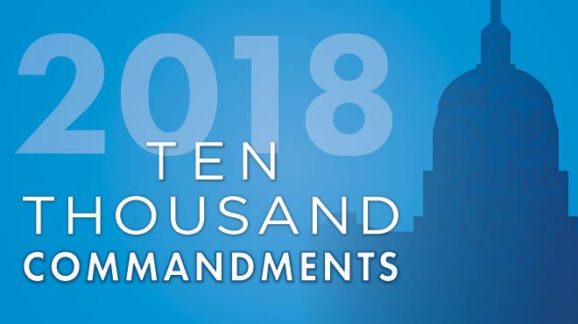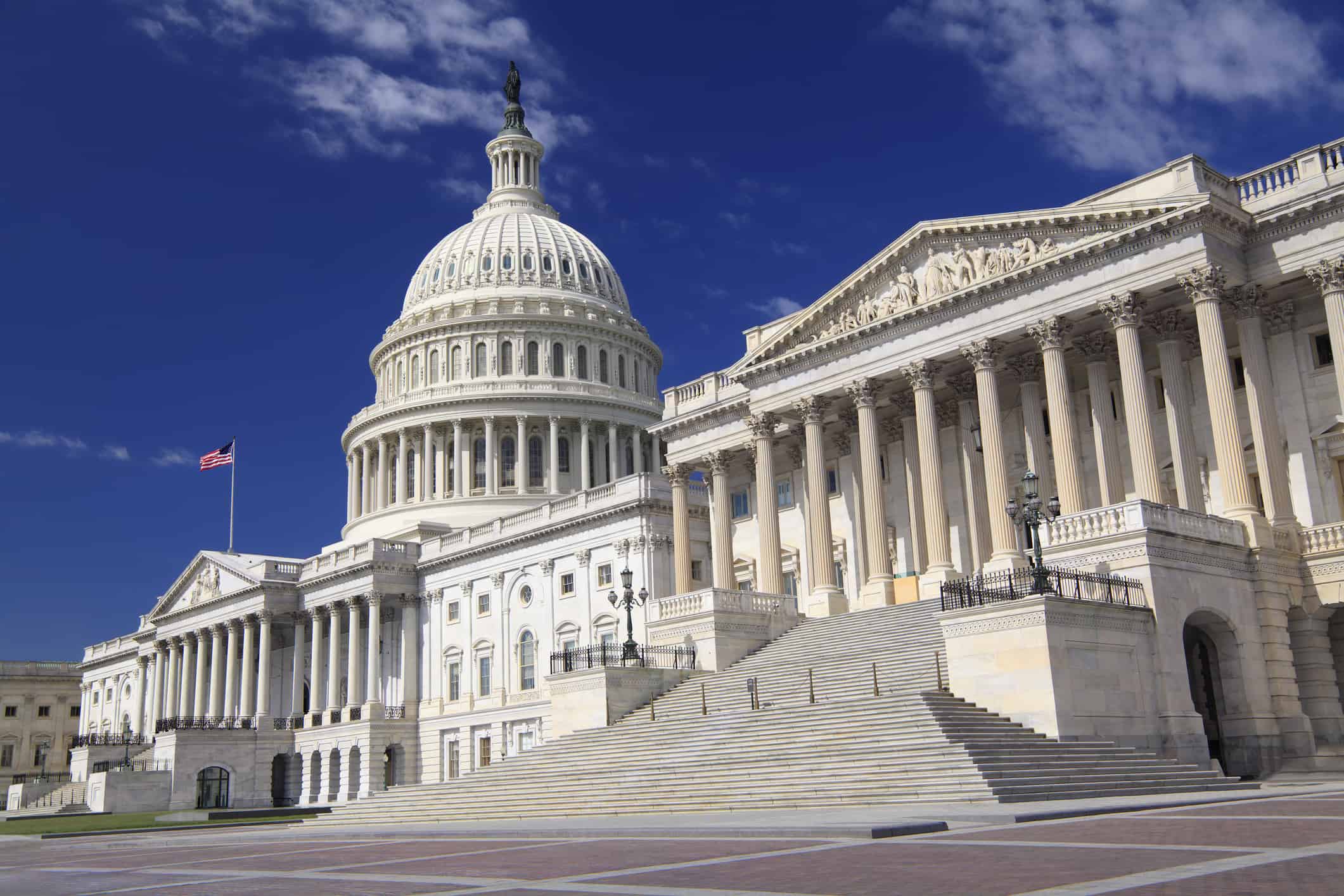Long History for ‘10,000 Commandments’ on Capitol Hill

 The 25th anniversary of CEI’s flagship study on federal regulation, “10,000 Commandments”, has been getting a lot of attention recently. We’re always happy when new people learn about and cite the work of Wayne Crews and other CEI experts on regulatory reform, but there’s one audience that has a unique influence on the issue—members of Congress. In a recent op-ed for USA Today, Wayne and Ryan Young wrote about how, despite good progress coming out of the White House, it is ultimately up to the House and Senate to act when it comes to cutting government red tape:
The 25th anniversary of CEI’s flagship study on federal regulation, “10,000 Commandments”, has been getting a lot of attention recently. We’re always happy when new people learn about and cite the work of Wayne Crews and other CEI experts on regulatory reform, but there’s one audience that has a unique influence on the issue—members of Congress. In a recent op-ed for USA Today, Wayne and Ryan Young wrote about how, despite good progress coming out of the White House, it is ultimately up to the House and Senate to act when it comes to cutting government red tape:
In 2017, federal regulators issued the lowest number of final rules — 3,281 — since the National Archives began publishing these numbers in 1976. But the important question for Americans is: Will it last?
The answer is: only if Congress helps out. Despite a number of executive orders, if you look at the long-term outlook, federal agencies already have a slew of regulations planned that could reverse Trump’s early progress. To prevent erasing gains made thus far, Congress needs to give Trump’s reforms legislative teeth before his affinities for protectionism and antitrust get in the way, and before the next administration reverses course with the stroke of a pen.
With that in mind, we’re glad that members of Congress have been paying attention to our work over the years. Way back when the 105th Congress was moving to amend the Paperwork Reduction Act with provisions specific to small businesses, the House Committee on Government Reform and Oversight issued a report citing the 1998 edition of “10,000 Commandments”, which noted that “U.S. regulatory costs in 1997 ($688 billion) exceeded 1996 personal income taxes ($631 billion) and 1995 corporate profits ($601 billion)” and “Since President Clinton took office in 1993, the number of EPA rules affecting small firms has increased 92 percent.”
Wayne’s commentary “So, What Will This Unfunded Mandate Cost Me?” was introduced into the Congressional Record during deliberation on the Mandates Information Act of 1999 as well. A decade later, Rep. Virginia Foxx (R-VA) joined the debate over the Job Creation through Entrepreneurship Act, referring her colleagues to an updated edition of “10,000 Commandments”:
There’s a study entitled: “Ten Thousand Commandments: An Annual Snapshot of the Federal Regulatory State,” which is issued by the Competitive Enterprise Institute. And just a few statistics about it because, again, we could be dealing with some issues that would reduce the role of regulations in the lives of small business owners.
I want to bring that up because this is a third point I think that hurts our small businesses tremendously. Given that in 2007 government spending stood at $2.73 trillion, the hidden tax of regulation now approaches half the level of Federal spending itself. Regulatory costs rival estimated 2007 individual income taxes of $1.17 trillion. Of the 3,882 regulations now in the works, 757 affect small businesses. Regulatory costs of $1.16 trillion absorb 8.5 percent of U.S. gross domestic product.
During the 113th Congress as well, the House Judiciary Committee cited Wayne in a report on the Regulations from the Executive in Needs of Scrutiny (REINS) Act:
As time has gone by, and particularly since the onset of the Obama Administration, the need for [Congressional Review Act] reform has become all the more pressing. In 2009, Federal agencies promulgated 3,503 final rules, while Congress passed and the President signed into law only 125 statutes. Last term, the Small Business’ Office of Advocacy reported that Federal rulemaking imposed a cumulative burden of $1.75 trillion on our economy–a figure that equaled fourteen percent of national income.
More recently, in the 115th, the Senate Homeland Security and Governmental Affairs Committee included the study in a review of the Regulatory Accountability Act:
Although the [Administrative Procedures Act] has not significantly changed over the last seventy years, the Executive Branch’s role in governing all facets of American life has changed and grown tremendously. Each year Federal agencies add thousands of pages of rules to the Code of Federal Regulations. As the administrative state has grown larger and more complicated, presidents of both parties have recognized the need for regulators to engage in thoughtful, transparent analysis before promulgating final regulations. For thirty-six years, Presidents have issued executive orders intended to make the regulatory process more transparent and accountable.
These few highlights are a sample of the many times CEI research and expert commentary have been referenced and relied on by both individual members of Congress and committees on the issue of regulatory reform. We look forward to working with our friends on Capitol Hill to move reform legislation forward in the current session and in the next Congress as well.